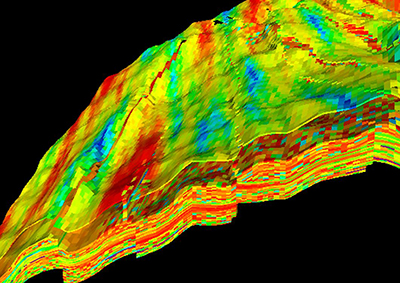This course will teach you how to evaluate reservoirs and quickly identify flawed results. Robust, minimum error reserves are achieved by a logical, systematic integration of all relevant data. Interpretation is cost-effective compared with data acquisition or development mistakes and essential for the complex reservoirs and marginal fields being re-evaluated today. Systematic Integration will often replace the need to run expensive logs and explain apparent data conflicts. It provides the right answer faster, minimizes uncertainty and strengthens your position as an operator. By contrast stand-alone log analysis often results in bad economic decisions and bad personal reputations.
This course demonstrates through an experienced consultant how robust answers are achieved by the integration of diverse data. Basic economic questions are addressed head-on by a disciplined, logical process which optimizes the interpretation of Porosity, Permeability, Saturation, Net pay, and Fluid Contacts - the basis of Reserves. Low-Contrast-Low-Resistively pay, clastics and carbonates are evaluated by simple integration techniques which surpass stand-alone log analysis. LWD, wire line, NMR, image logs, routine & special core and MDTs are brought innovatively together to interpret difficult exploration wells, increase reserves and improve reservoir simulation. The Seismic Petrophysics work flow to project results into the geo.model is reviewed. This course is a condensed packet of powerful integration techniques. It continues to evolve through natural selection over 17years of presentations and mainstream consulting. Its manual is a comprehensive and lasting benefit to the novice and experienced student alike. Integrated Petrophysics first public, mainstream petrophysics integration course and remains THE BENCHMARK PETROPHYSICS COURSE TODAY.
Course objectives:
- How to drill, core, log and test for clear formation evaluation results
- How to critically review petrophysical studies & quickly identify flawed results using simple, logical checks
- How to perform basic log analysis, core-log integration and seismic-petrophysics integration
- How to de-mystify petrophysics, clarify field management decisions and reduce uncertainty
- How to integrate modern hi-tech logs simply and powerfully with LWD, core, logs and seismic data
- How to extract and deliver what really matters from the barrage of modern petrophysical data
- How to avoid 10 common errors which ruin your geological models
Who should attend?
Petrophysicists, exploration geologists, operations geologists, reservoir geologists, reservoir engineers, geophysicists, core analysts or anyone with a year or more of experience with creating or using formation evaluation results.
Course Outline:
Module 1
- Petrophysical objectives. Measurement value. Data hierarchy & calibration logic. Why integrate? Basic core-log integration. What is capillary pressure? Vshale & lithology, complex lithologies. Basic log analysis Workshop.
Module 2
- Porosity: Total or Effective? Gas zones & complex lithologies. Calibrating porosity. Sw100 zones & Rwa’s: their derivation & effective use. Core-log Workshop.
Module 3
- Sw: improving inputs which really matter: Rt/Ro, Rw, m, n, Sw: OBM/WBM core, capillary pressure, magnetic resonance, routine core. Facies & wettability defined, explained AND put to good use! Calibrating Sw. Shaly sands: Defined & explained, integrating resistivity with non resistivity data e.g.FMI/NMR/Pc. WaxmanSmits Qv, m*, n* with or without core. Evaluation Workshop.
Module 4
- Fluid Contacts & Capillary Pressure: using MDT/RCI/RDTs effectively. Distinguishing the mobile phase. The Reservoir Master Equation: What is it? How do I use it? Permeability: Rock-types, NMR, conventional logs, Bound fluid volume, Coates Permeability, Well tests, Producibility, The Sw Decision Tree and how to use it. Useful simulation input. Formation Tester Workshop.
Module 5
- What is Net pay? Definition: proper criteria & evaluation. Seismic-petrophysical work flow, fluid substitutions. Course Review. Key recommendations for drilling, coring, logging. Surviving Peer Reviews. PhD Conglomerates case history. 10 systematic errors which ruin your geological model
WORKSHOP STYLE:
This will be a participative workshop with a mix of interactive learning sessions, exercises and discussions aimed to provide maximum impact and learning retention for all delegates.




